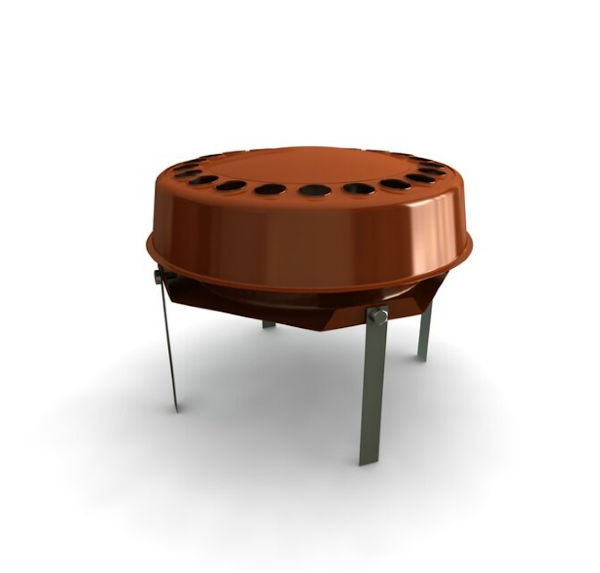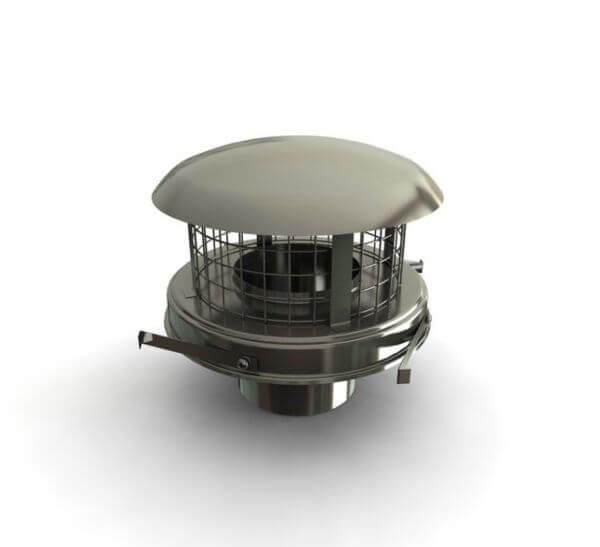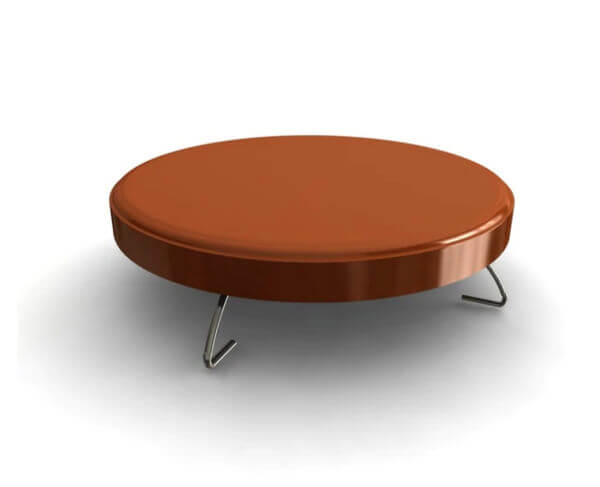Do You Need a Chimney Cowl on Your Chimney?
Whether you are having a new chimney fitted or are starting to notice a few issues with the performance of your existing stove or fireplace, you may have been wondering whether you need a chimney cowl.
A cowl is often one of the last parts put into place when it comes to your chimney - but that doesn’t mean it is of little importance! Chimney cowls - also sometimes called a ‘chimney cap’ - can help stop downdraught and improve the efficiency of your chimney flue.
However, if you are new to the world of chimneys and flues, you might be feeling a bit lost. Maybe you are unsure of exactly what a chimney cowl is, how they work and which one you should buy?
In this guide, we go through some of the most commonly asked questions about chimney cowls and explain how to find the best one for your flue...
What is a Cowl on a Chimney?
A chimney cowl is a ventilated cover that is placed over the top of your chimney pot. While they are optional, a cowl can improve the function of your chimney by resolving issues such as drafts, draw problems, rain entry and blockages caused by animals or debris.
Modern chimney cowls are usually made from stainless steel as it is non-corrosive and durable. There are a few different types of cowl available, which we will explain later in this post, so you need to work out which one best suits your chimney or stove’s own requirements.
How Does a Chimney Cowl Work?
While different chimney cowls tend to address certain concerns better than others, they all fundamentally work in the same way - they protect your chimney from external factors that can prevent it from doing its job properly.
For anti-downdraught cowls, this works by preventing winds from pushing smoke downwards, an issue that can cause smoke to blow back into your stove or fireplace. These types of chimney cowls work by helping to recreate the up draught that your chimney needs to carry the smoke up and away.
Not all cowls are anti-downdraught, though. Standard chimney cowls work by preventing rain water and debris from falling down the flue with a wire mesh covering - this still allows the fumes to escape and allows for adequate ventilation.
Do I need a Chimney Cowl?
Generally, most chimneys can benefit from having a cowl fitted - even if just to protect your chimney from unwanted water, leaves and animals causing damage such as damp or blockages.
But, to get the best out of your chimney cowl, you need to make sure you buy the most suitable one. If, for example, you fit an anti-downdraught cowl when you don’t have any downdraught issues, this can actually create problems in your chimney.
Similarly, if you do suffer from downdraught, finding a cowl that will actually help fix your issue is essential.
So, take a look at our guide below to the different types of chimney cowl and who they are best for...
The Different Types of Chimney Cowls - Which One Do You Need?
Anti-Downdraught Chimney Cowl
Pictured: MAD Anti-Downdraught Cowl
Do you have smoke coming out of your stove or fireplace during windy weather? Or do you find it hard to light your fire when the winds are up outside?
If so, an anti-downdraught chimney cowl is probably what you need. However, be aware that these issues are not always the result of downdraught. They can also be caused by lack of ventilation causing an imbalance of pressure in your room and chimney. So, if these things are happening even when it isn’t a windy day, a cowl might not be all you need to stop the draft problem.
Rain Cap Chimney Cowl
Pictured: Pot Hanger Rain Cap 6"
Chimney cowls are also sometimes referred to as ‘rain caps’ or bird guards - these are a more basic model that primarily prevents rain and debris entry. If you have found blockages in your chimney in the past - such as birds nesting or a build up of leaves for example - this could be just what you need.
Cowls for Disused Chimneys
Pictured: Ventilated Capping Cowl
In your search for a chimney cowl, you might also notice another type available - ventilated capping cowls for out-of-use chimneys. These provide more coverage for the chimney, which prevents animals and debris from getting inside, while still allowing for some ventilation. This is important even for unused chimneys, as lack of ventilation can cause damp problems in your chimney breast and walls.
These types of chimney cowls are not suitable for chimneys that are currently in use.
Solid Fuel or Gas Chimney Cowl?
Finally, it is important to know that some cowls are designed for use with a certain type of fuel only. If you have a solid fuel stove or fire, make sure you don’t choose a cowl that has been designed for use with gas or oil appliances.
Would you like further advice on what chimney cowl you need? Feel free to contact us for more advice.
Latest Articles
-
Air Pollution Down in the UK Despite Record Wood Burner Sales
Great news! Wood-burning stoves, once considered environmental villains, have transformed into eco-f …18th Apr 2024 -
A Guide to Stove Installation in Lodges, Sheds, and Shepherd’s Huts
Shepherd’s huts, lodges, and sheds have become increasingly popular as charming retreats or alternat …25th Mar 2024 -
Pinned vs. Pinless Moisture Meters: Which is Best for Firewood?
When you collect or buy firewood, it usually starts very moist inside. Using sopping wet wood to bur …4th Mar 2024









